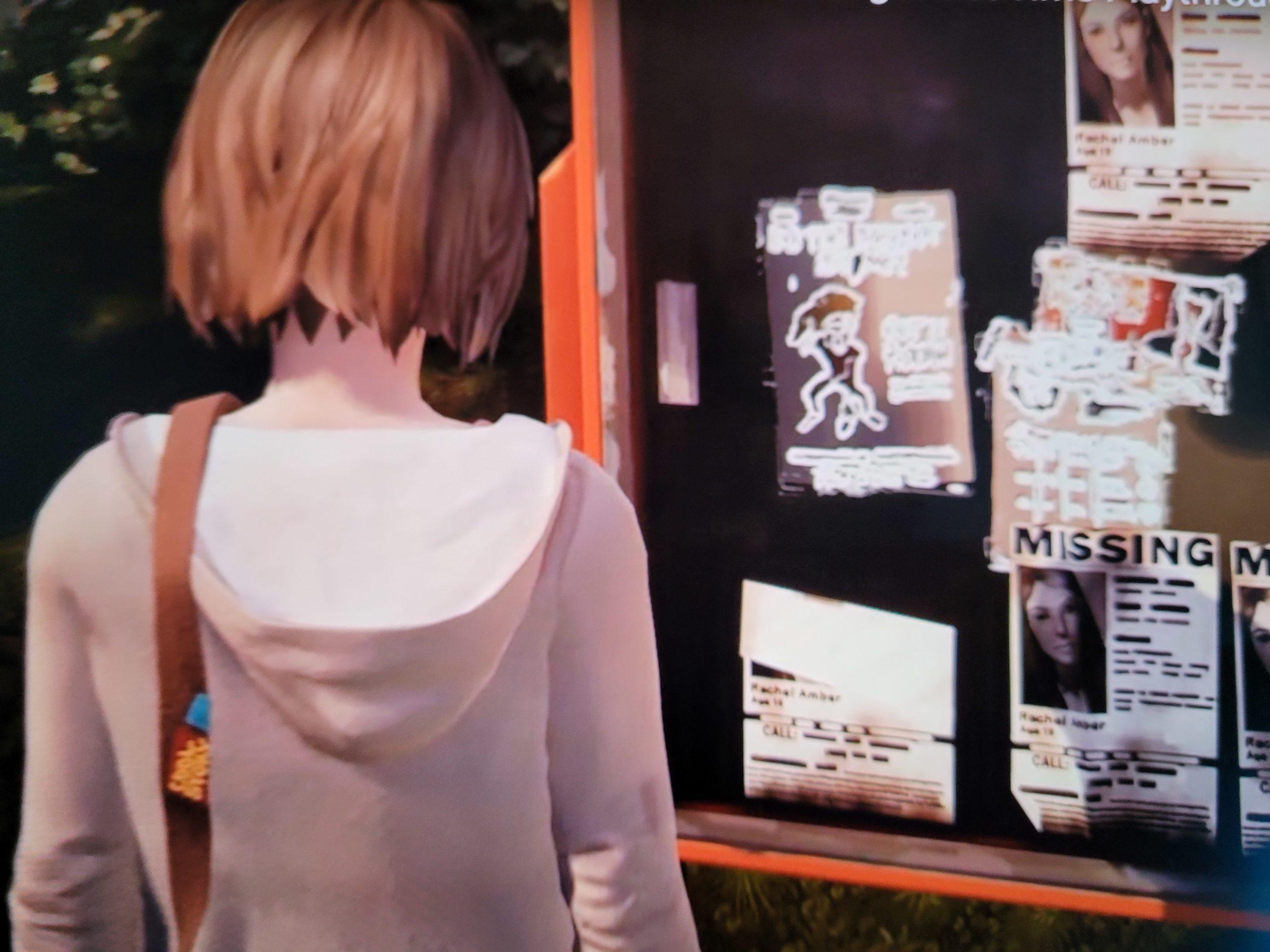Critical Play: Life Is Strange (Chapter 1)
Introduction
This week, for my mystery critical play, I played Life Is Strange, published and developed by Square Enix on January 30, 2015. The game is labeled as 16+, but given the school setting and dynamics, the target demographic seems to be young adults from ages 16 to 30. Within the game, players play as Max, a teenage girl with the ability to rewind time, and traverse through the story with the ability to alter past events.
Formal Elements
Life is Strange is a single player game, with the one player having information as their primary resource, obtained from their special ability to rewind time. The game is exploratory by nature; given the ability to rewind time, players can explore many different storylines, but will ultimately make key decisions that will impact how they are subsequently viewed by different characters. Many of the game’s decisions present a tradeoff; players must choose between the favor of two characters, or between their own wellbeing and the wellbeing of a friendly character. The game also uses this time mechanic to gradually reveal information about different characters; the more players change their decisions, the more they learn about the characters around them, which will influence their future decisions. Thus, I would categorize the game as being strongest in the exploratory and narrative categories of fun.

Different decisions will lead to different scenes and reveal hidden information

Most decisions have outlying consequences; players must decide between two good / bad outcomes
Specific Moments
In my experience, the game was very captivating in how it presented information. While the very first scene, presumably taking place very far in the future, threw me a bit off, the rest of the story flowed smoothly; the controls felt intuitive, and it was very clear how rewinding time could allow players to gather more information. The game did not really contain any puzzles, so everything continued to progress; most of the key, distinguishing decisions were notable moments. For example, early on, I chose to report a classmate for wielding a weapon instead of keeping the information to myself, which didn’t tarnish my reputation, but also caused other characters to strongly dislike me. In terms of fails, aside from the confusing start, I would say the game is well executed.
Recommendations
While I very much enjoyed the first chapter of the game, I have a few very small recommended adjustments. I felt that the game was too straightforward; introducing more puzzles, even simple ones, could help slow down the pace and avoid the feeling of constant action burnout. However, if too many puzzles are introduced, it may break the story’s immersion, so there is definitely a careful balance and tradeoff contained in that decision.


